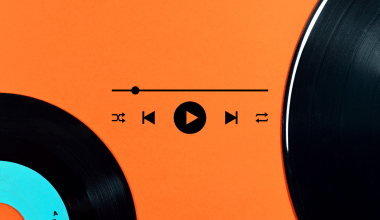Have you ever tried to study but got distracted by all the noise around you? Or maybe you found it hard to focus because it was just too quiet? This is where a Spotify study playlist can save the day! It’s a collection of songs that helps you stay calm and focused while you work or study. The best part? You can create one yourself and even share it with others. Let’s dive into how you can make an amazing playlist that everyone will love.
What is a Spotify Study Playlist?
A Spotify study playlist is a special mix of songs designed to help people concentrate. These playlists usually include relaxing tunes, soft beats, or even nature sounds. They don’t have loud vocals or distracting lyrics, making it easier for you to focus on your work or studies. Many students, professionals, and even parents love these playlists because they create the perfect background for getting things done.
Why Music Helps You Focus
Did you know music can actually help your brain work better? Research shows that certain types of music can improve concentration and reduce stress. This is why study playlists are so popular. Here’s how it works:
- Instrumental music: Songs without words help you focus without distractions.
- Calm tempos: Slow and steady beats keep your brain relaxed.
- No loud surprises: Soft, even music helps you stay in the zone.
Step-by-Step: How to Create Your Spotify Study Playlist
1. Choose a Theme
The first step is deciding what kind of mood you want your playlist to set. Some ideas are:
- Lo-fi beats: Great for relaxed, focused vibes.
- Classical music: Perfect for creative work or writing.
- Nature sounds: Like rain or forest noises for a peaceful setting.
- Chill electronic: Light beats that keep you energized.
Pick one theme to make your playlist consistent. If it’s all over the place, it might distract listeners.
2. Find the Right Songs
Spotify has millions of songs, but not all of them are right for a study playlist. Look for tracks that:
- Have no lyrics or very soft vocals.
- Have a slow to medium tempo (not too fast).
- Fit the mood you’re going for.
You can search for terms like “instrumental,” “ambient,” or “chill beats” to find great songs. You can also explore playlists by others and add songs you like.
3. Order the Songs Properly
The way you arrange the songs in your playlist is super important! Follow these steps:
- Start slow: Begin with soft, calming tracks.
- Build up energy: Gradually add songs with a bit more rhythm.
- End peacefully: Close the playlist with mellow tracks to help people wind down.
A good playlist feels like a journey. It should gently guide listeners through their study time without being jarring.
4. Keep it the Right Length
Your playlist doesn’t need to be endless. About 1.5 to 2 hours is just right. This matches the average time people spend studying or working in one sitting. If they need more, they can always hit the replay button!
5. Add Variety but Stay Consistent
Mix different types of sounds, like:
- Piano solos
- Guitar instrumentals
- Light electronic beats
- Nature-inspired tracks
Just make sure they all fit your theme. Too much variety can break the mood.
How to Make Your Playlist Stand Out
1. Write a Good Playlist Description
Your playlist’s description helps people find it on Spotify. Use simple keywords like:
- “Relaxing music for studying”
- “Chill beats to focus”
- “Calm and peaceful sounds for work”
This makes your playlist easier to find when people search for study music.
2. Create an Eye-Catching Cover
A good-looking cover makes your playlist more clickable. Use tools like Canva to design a simple, pretty image. Include words like “Study” or “Focus” so people know what it’s about.
3. Collaborate with Friends
Make your playlist even better by asking friends to add their favorite study tracks. This way, you get a mix of ideas and it feels more personal.
4. Update Regularly
Don’t let your playlist get boring. Add new songs every few weeks to keep it fresh. You can also remove tracks that don’t fit well anymore.
Popular Music for a Study Playlist
Here are some types of music you can add to your playlist:
1. Lo-fi Beats
Lo-fi music is soft, cozy, and perfect for studying. Check out artists like Chillhop Music or stream popular Lo-fi channels on Spotify.
2. Classical Music
Timeless pieces by Mozart, Beethoven, or Chopin are loved by many. They calm your mind and help with deep thinking.
3. Ambient Sounds
Sounds like rain, ocean waves, or even a crackling fireplace can create a peaceful atmosphere for studying.
4. Chill Electronic Music
Artists like Tycho, ODESZA, or Bonobo make great tracks that are upbeat but not overwhelming.
5. Jazz Instrumentals
Smooth jazz adds a sophisticated touch to your playlist while keeping the vibe relaxed.
Creating a great playlist is just the start. To get people to listen, you’ll need to share it!
Post your playlist on Instagram, Twitter, or even TikTok. Use hashtags like #StudyPlaylist or #FocusMusic.
2. Create Short Videos
Use YouTube or TikTok to make quick videos about your playlist. Show clips of people studying with your music in the background.
3. Collaborate with Others
Partner with friends, classmates, or influencers. Ask them to share your playlist with their followers.
What Makes a Playlist Truly Great?
A great Spotify study playlist isn’t just about the music. It’s about creating a space where listeners feel calm and productive. To make your playlist stand out:
- Keep it simple and focused.
- Regularly check which songs people like and which ones they skip.
- Stay true to your theme.
Why You Should Try This Today
Making a Spotify study playlist is easy and fun. Plus, it can help so many people focus better on their work or studies. Whether you’re a student, a working professional, or just someone who loves good music, your playlist can make a big difference.
Final Thoughts
A Spotify study playlist is more than just a collection of songs. It’s a tool to help people concentrate, relax, and feel good while they work. By choosing the right music and sharing it with the world, you can make studying or working a little bit easier for everyone.
Related Articles:
For further reading, explore these related articles:
- The Complete Guide to Song Promotion: How to Make Your Music Shine
- Gana Kaise Likhe: A Complete Beginner’s Guide to Writing Songs
- Which Musical Instrument Is Easy to Learn? Start Your Musical Journey Today!
For additional resources on music marketing and distribution, visit Deliver My Tune.






